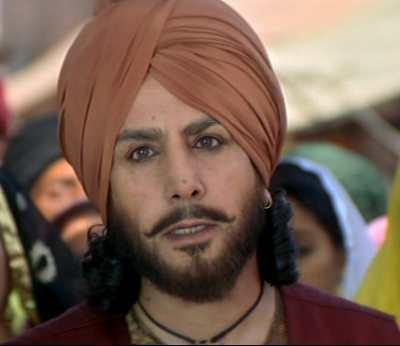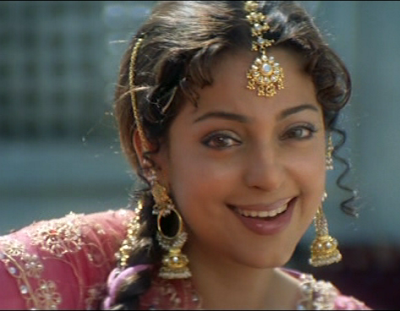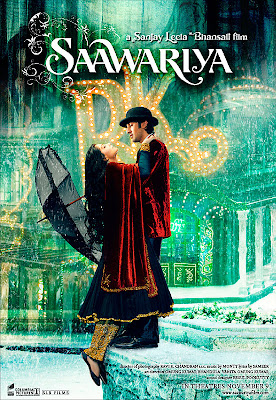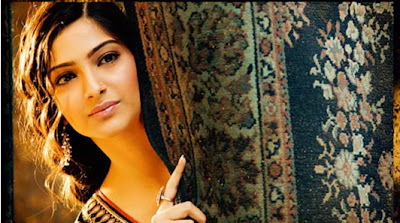
A spiritualistic story of a Sufi saint who finds inspiration in love, eclipsing into epic of Heer. Waris Shah delves sonorously into devotion in an exuberant manner, presenting a high voltage period drama.
Punjabi cinema has often been deemed as vulgar and clichéd, warranting only a layman status for its films which were accompanied by unendurable performances and tasteless storylines. However, post millennium; Punjabi films have undergone as stark a revamp as a Laurence Llewelyn Bowen boudoir, replacing the hoary with the contemporary. So when National Award winners Sai Productions announced their latest venture, Waris Shah, the first big budget period drama to originate from Punjabi cinema, expectations were mammoth.
Set in the Mughal era, the story unfolds with the emperor Aurangzeb lamenting a ban on music which he believes distracts one from God, a prohibition which hallowed saint Makhdoom chooses to ignore thus being sentenced to death. Before his early demise, he instructs his disciple Waris Shah (Gurdas Maan) to travel to Malka, a village where the ban has not yet been placed and an arena which he believes will inspire Waris to write his poetic tale, Heer.

Waris soon finds his muse in the form of Bhagpari (Juhi Chawla) and the two form a sinless love which serves as the backdrop for Waris Shah’s writings. As pigeon messengers, poetry and melodic tunes of flutes all come together to decorate the lovers rendezvous, a jealous and lustful Saabo (Divya Dutta) vies for a piece of Waris’ heart, only to be rejected by his upholding morals.
As the woman scorned Saabo vows revenge and instigates suspicions amongst the villagers that Waris and Bhagpari share an illicit relationship and upon Bhagpari’s espousal to another, seeks yet again to find acceptance from her infatuation. With love turned into the bitterness of lime, the three are left caught in a web of murder, misery and mediation.
Waris Shah should be applauded for bringing about one of the most positive changes in Punjabi cinema; it goes against the grain of every cliché and brings about an innovative and high quality experience which not only looks sleek but also carries a soul. Thankfully, the audience is saved from nonsensical subplots, forced comedy and commercial gimmicks but instead director Manoj Punj stays faithful to his story and delivers the finest of his career.
one of the most positive changes in Punjabi cinema; it goes against the grain of every cliché and brings about an innovative and high quality experience which not only looks sleek but also carries a soul. Thankfully, the audience is saved from nonsensical subplots, forced comedy and commercial gimmicks but instead director Manoj Punj stays faithful to his story and delivers the finest of his career.
Performances are of a dizzyingly high caliber with Maan taking the forefront for his sincere portrayal of the famous poet Waris Shah. Maan brings about believability in a figure that is otherwise quite enigmatical to history and breathes every breath of Waris Shah as though it was his own. Unfeasible to imagine any other in his role, it is his ability to project the nuances of the character in a subdued manner, sans melodrama which works. As Maan is already an accomplished singer, it comes naturally to him to project the singing lyrics of Waris Shah’s poetic brilliance and together with his meticulous image of smoky eyes and sonnet tresses; Waris Shah is reborn on screen.
Juhi Chawla, after a career that spans twenty years, still holds the screen presence and grace of a leading lady and her performance demands an extreme likeability. Be it her allusive eyes or infectious smile, Chawla bestows the character of Bhagpari with all of the knowledge of a seasoned vet eran.
eran.
Divya Dutta in a role that merges into the grey spectrum is a revelation. She manages to create a fine line between the fiery Saabo and the susceptible woman and thus walks away with the meatier female character.
A film with a legendary singer as its lead promises timeless music and together with Jaidev Kumar, Maan creates a spellbinding composition. The film is ornamented with emblematic verses of Waris Shah’s Heer verses throughout, also serving as much of the dialogue which is a treat for those in want of rich palaver. “Ve Kabootra” proves to be one of the most soulful gems of the noughties whilst “Kas Shama Aaj Tere Li” oozes with the haunting vocals of Kavita Krishnamurty. The songs serve to only move the story ahead and with a film that is central to the arts, the music comes as a welcomed gift.
The painstaking attempt to recreate the 18th century era is prominent in each and every frame and cinematographer R A Krishna has left no stone unturned to transport the audience into a medieval world.
each and every frame and cinematographer R A Krishna has left no stone unturned to transport the audience into a medieval world.
Credit must be given to Manjeet Maan for the costumes of the film which were meticulously researched in various museums to depict the timescale aptly. The colors of the film work in such a way that they entice the viewer into a world of finery and murshidabadi silks which is beautifully backed by an irreproachable script.
There have been countless love stories which have graced the silver screen, greeting the audience with melodrama and cringe worthy dialogues. Yet Waris Shah goes beyond its indulgently seeped chimerical tale and ignites itself with a finer flame of spiritualism and mankind’s devotion to his ardor. This is what makes Waris Shah anything but a mundane love epic.
Waris Shah is an exemplary film not only for Punjabi cinema but for cinema across the world. Not once does it compromise itself but delivers a captivating and endearing story in an immortal mien. Late Manoj Punj never lived on to see the critical acclaim the film received when it garnered a National award but he shall surely be remembered for his pinnacle that is Waris Shah.
Punjabi cinema has often been deemed as vulgar and clichéd, warranting only a layman status for its films which were accompanied by unendurable performances and tasteless storylines. However, post millennium; Punjabi films have undergone as stark a revamp as a Laurence Llewelyn Bowen boudoir, replacing the hoary with the contemporary. So when National Award winners Sai Productions announced their latest venture, Waris Shah, the first big budget period drama to originate from Punjabi cinema, expectations were mammoth.
Set in the Mughal era, the story unfolds with the emperor Aurangzeb lamenting a ban on music which he believes distracts one from God, a prohibition which hallowed saint Makhdoom chooses to ignore thus being sentenced to death. Before his early demise, he instructs his disciple Waris Shah (Gurdas Maan) to travel to Malka, a village where the ban has not yet been placed and an arena which he believes will inspire Waris to write his poetic tale, Heer.

Waris soon finds his muse in the form of Bhagpari (Juhi Chawla) and the two form a sinless love which serves as the backdrop for Waris Shah’s writings. As pigeon messengers, poetry and melodic tunes of flutes all come together to decorate the lovers rendezvous, a jealous and lustful Saabo (Divya Dutta) vies for a piece of Waris’ heart, only to be rejected by his upholding morals.
As the woman scorned Saabo vows revenge and instigates suspicions amongst the villagers that Waris and Bhagpari share an illicit relationship and upon Bhagpari’s espousal to another, seeks yet again to find acceptance from her infatuation. With love turned into the bitterness of lime, the three are left caught in a web of murder, misery and mediation.
Waris Shah should be applauded for bringing about
 one of the most positive changes in Punjabi cinema; it goes against the grain of every cliché and brings about an innovative and high quality experience which not only looks sleek but also carries a soul. Thankfully, the audience is saved from nonsensical subplots, forced comedy and commercial gimmicks but instead director Manoj Punj stays faithful to his story and delivers the finest of his career.
one of the most positive changes in Punjabi cinema; it goes against the grain of every cliché and brings about an innovative and high quality experience which not only looks sleek but also carries a soul. Thankfully, the audience is saved from nonsensical subplots, forced comedy and commercial gimmicks but instead director Manoj Punj stays faithful to his story and delivers the finest of his career.Performances are of a dizzyingly high caliber with Maan taking the forefront for his sincere portrayal of the famous poet Waris Shah. Maan brings about believability in a figure that is otherwise quite enigmatical to history and breathes every breath of Waris Shah as though it was his own. Unfeasible to imagine any other in his role, it is his ability to project the nuances of the character in a subdued manner, sans melodrama which works. As Maan is already an accomplished singer, it comes naturally to him to project the singing lyrics of Waris Shah’s poetic brilliance and together with his meticulous image of smoky eyes and sonnet tresses; Waris Shah is reborn on screen.
Juhi Chawla, after a career that spans twenty years, still holds the screen presence and grace of a leading lady and her performance demands an extreme likeability. Be it her allusive eyes or infectious smile, Chawla bestows the character of Bhagpari with all of the knowledge of a seasoned vet
 eran.
eran.Divya Dutta in a role that merges into the grey spectrum is a revelation. She manages to create a fine line between the fiery Saabo and the susceptible woman and thus walks away with the meatier female character.
A film with a legendary singer as its lead promises timeless music and together with Jaidev Kumar, Maan creates a spellbinding composition. The film is ornamented with emblematic verses of Waris Shah’s Heer verses throughout, also serving as much of the dialogue which is a treat for those in want of rich palaver. “Ve Kabootra” proves to be one of the most soulful gems of the noughties whilst “Kas Shama Aaj Tere Li” oozes with the haunting vocals of Kavita Krishnamurty. The songs serve to only move the story ahead and with a film that is central to the arts, the music comes as a welcomed gift.
The painstaking attempt to recreate the 18th century era is prominent in
 each and every frame and cinematographer R A Krishna has left no stone unturned to transport the audience into a medieval world.
each and every frame and cinematographer R A Krishna has left no stone unturned to transport the audience into a medieval world.Credit must be given to Manjeet Maan for the costumes of the film which were meticulously researched in various museums to depict the timescale aptly. The colors of the film work in such a way that they entice the viewer into a world of finery and murshidabadi silks which is beautifully backed by an irreproachable script.
There have been countless love stories which have graced the silver screen, greeting the audience with melodrama and cringe worthy dialogues. Yet Waris Shah goes beyond its indulgently seeped chimerical tale and ignites itself with a finer flame of spiritualism and mankind’s devotion to his ardor. This is what makes Waris Shah anything but a mundane love epic.
Waris Shah is an exemplary film not only for Punjabi cinema but for cinema across the world. Not once does it compromise itself but delivers a captivating and endearing story in an immortal mien. Late Manoj Punj never lived on to see the critical acclaim the film received when it garnered a National award but he shall surely be remembered for his pinnacle that is Waris Shah.
A masterpiece of understatement, brimming with emotion and spirit that can only be classified as poetry in motion.














